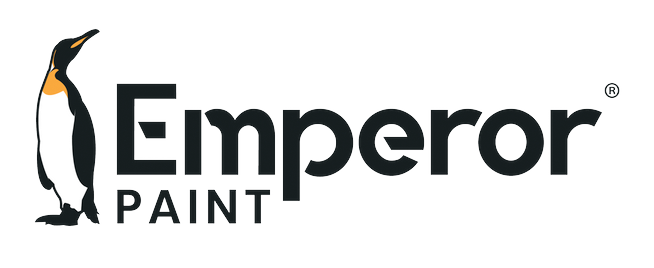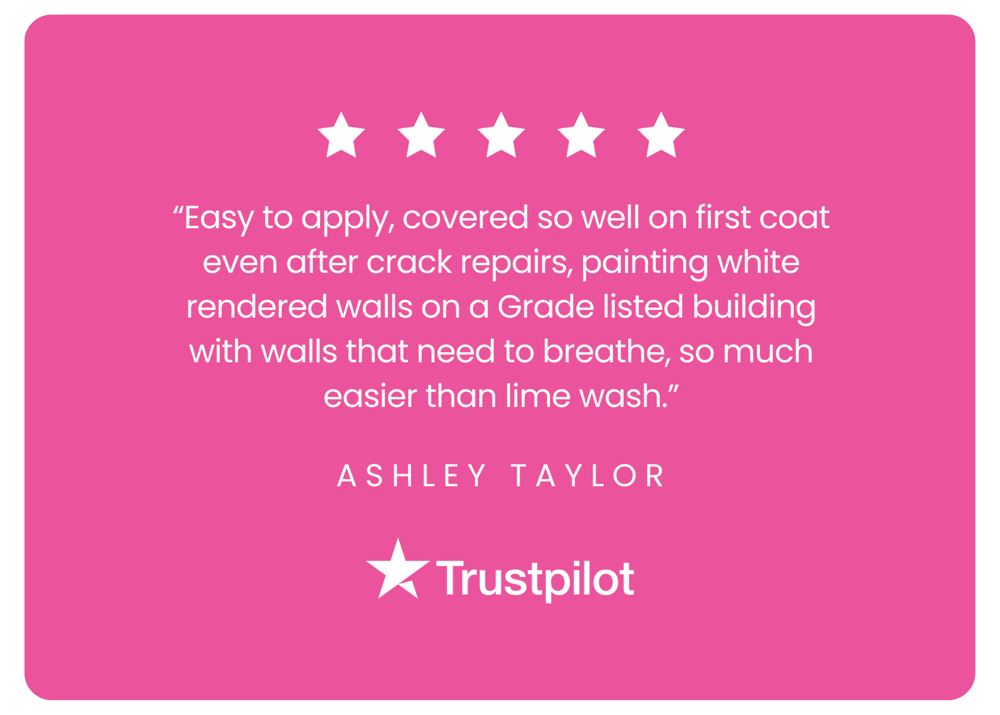
What Is Breathability?
Breathability refers to the free passage of water vapour through the pores of a surface. With many waterproof surfaces, it is crucial not to seal the surface completely due to a build-up of moisture.
Whether it is a waterproof jacket, or a breathable masonry paint, allowing water vapour to travel from inside the surface to the external environment is paramount to its long-term performance.
This is often not effectively maintained with waterproofing treatments, especially for waterproof masonry paints for exterior walls.
Why Is Breathability Important?
The most common type of masonry paint you will find in the UK is acrylic-based masonry paint. These standard acrylic masonry paints will all allow a degree of moisture to enter a structure as they are not completely waterproof. This is why they are often marketed as 'weatherproof' or 'weather resistant'. Furthermore, some waterproofing masonry paints & coatings successfully waterproof the surface of masonry by sealing the surface. These sealing products while successfully repelling water from the surface can prevent any water vapour from escaping from inside the exterior wall.
If the paint or coating is not breathable, any moisture that is present within the house either before or since the masonry paint is applied is trapped. This can accentuate any previous damp problems or cause damp that previously was not present.
Deterioration of the brickwork and breakdown of the surface can also occur due to frost damage, as the water vapour undergoes a freeze-thaw cycle that can result in a failure in the integrity of the substrate. This freeze-thaw cycle expands moisture by roughly 9% each time, gradually enlarging any damage each time, which in turn allows more moisture to enter and ultimately worsen the condition of the brickwork.
Furthermore, the moisture that cannot escape through the pores of the building can become trapped under the paint, resulting in peeling and bubbling due to loss of adhesion.
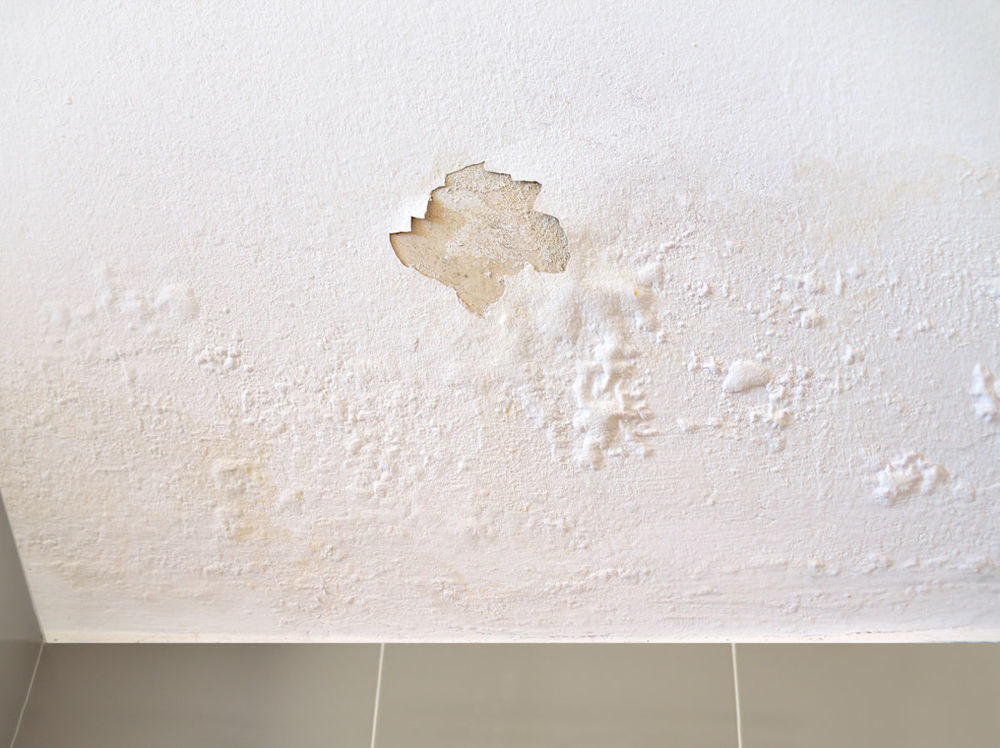
This makes non-breathable masonry paints not suitable for any buildings, but especially many older buildings that were built with a solid wall construction.
These highly porous properties were often treated with non-breathable masonry paint in the hope that moisture would be prevented from soaking into the solid wall, which without a cavity wall would easily spread into the internal wall causing damp. These non-breathable masonry paints applied to these buildings acted like a sealant, blocking the pores and trapping moisture.
This can be catastrophic for older buildings, leading to significant deterioration in building integrity and causing irreparable damage. Due to some sealant products, it has been believed by some that waterproof masonry paints should not be applied to these buildings at all.
However, a clear distinction must be made between waterproof masonry sealants that call themselves a waterproof masonry paint and technologically advanced products that utilise nano technology to repel water, while maintaining the breathability in porous materials.
To effectively protect a property of any age, the exterior masonry paint must have a low SD Value. An SD value is a way to measure a surfaces ability to resist water vapour in comparison to a metre of air. To be considered breathable, a masonry paint should have an SD value of 1 or lower.
If a material does not have an SD value of 1 or lower, this will not sufficiently allow water vapour to easily pass through the material. Eventually, the coating that has been applied will fail after a matter of years when the paint film is broken under the pressure.
How Can Waterproof Masonry Paint Be Breathable?
In the case of a breathable masonry paint for exterior walls, the surface must be water repellent from the outside, but permeable to water vapour from the inside.
This can be achieved through advanced nano-technology which bonds to the material. By forming a part of the material rather than simply creating a paint film, it does not negatively affect the breathability of the surface it is applied to. While chemically bonding to the surface, nano-technology lines the pours of the material without sealing them completely, meaning paint repels water from outside while still allowing moisture from inside to escape. This is because water in liquid form is larger than in gas form. This means that the rainwater cannot pass through the painted surface, while water vapour can still travel through the pores of the surface.
This is in stark contrast to many traditional sealants. While sealants are highly waterproof, they create a film on the surface of materials that is not breathable. This seals the pores of the material and results in any condensation from inside a property building up underneath the coating, causing it to fail.
Nano-technology ultimately allows exterior walls to stay dry. This has a huge range of benefits, as high-moisture levels has a number of side effects, aside from the damage to brickwork that we have previously discussed. One such benefit of keeping exterior walls dry is that it reduces penetrating damp. This is because wind-driven rain that previously would have soaked the exterior wall is prevented, ensuring that damp patches and black mould do not appear on interior walls as a result.
Furthermore, heat loss is one of the most costly results of having wet exterior walls. 35% of the heating within homes is lost through exterior walls, with damp content of 5% leading to an exterior walls losing its insulating properties by up to 50%. This means that when moisture levels are reduced, you also reduce the amount of heat that is lost out of the exterior wall of your home, helping to keep your home warmer for longer.
This also reduces your energy bills and your household's carbon footprint.
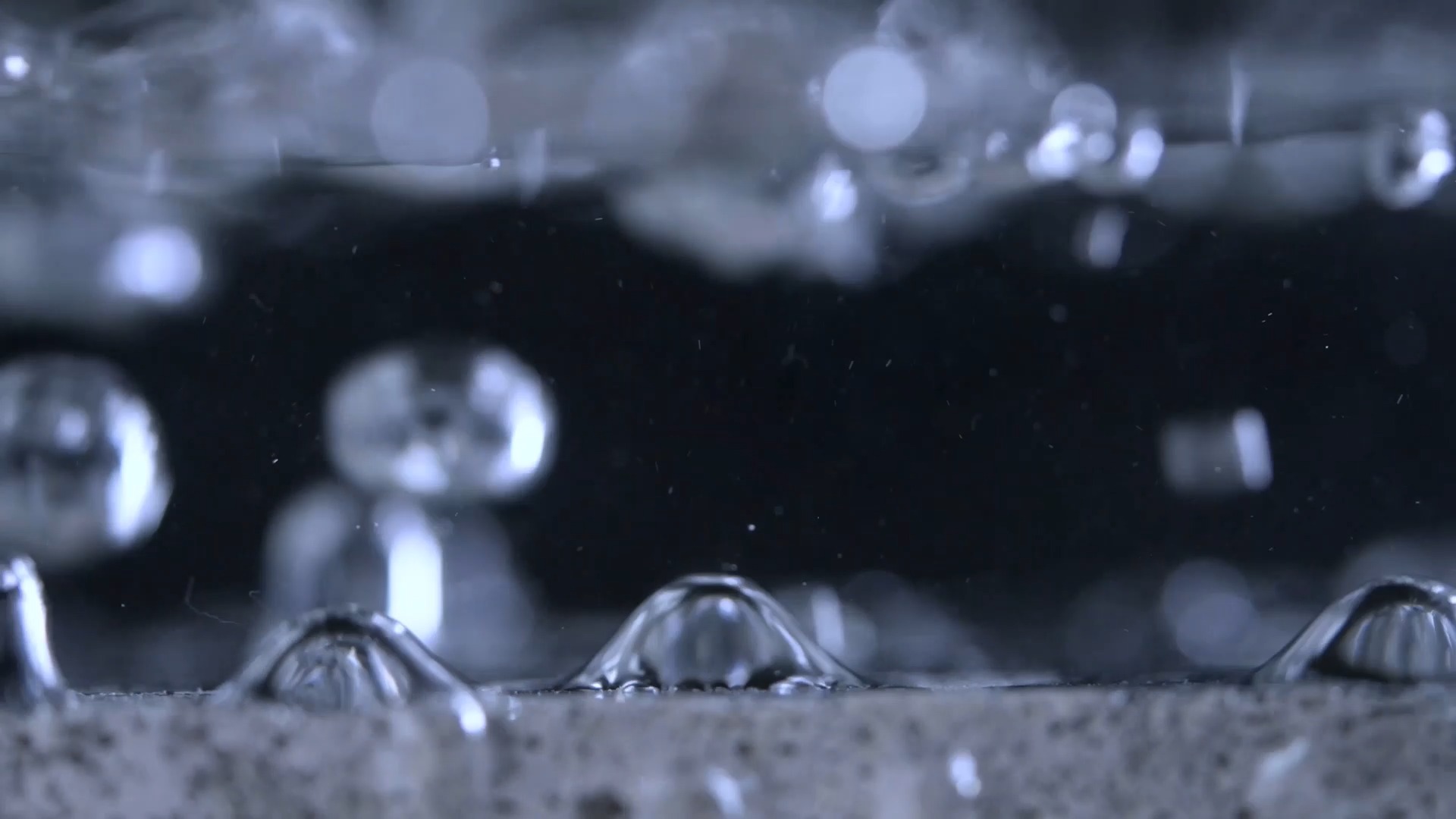
What Is The Best Breathable Masonry Paint?
As we have discussed, applying a waterproof but breathable masonry paint to your exterior walls is crucial for long-term performance.
After years of innovation, our highly breathable paints & treatments are the advanced waterproofing products available in the UK, containing our advanced super hydrophobic nano-technology. Our technology comes in two forms; a coloured masonry paint and a clear masonry cream.
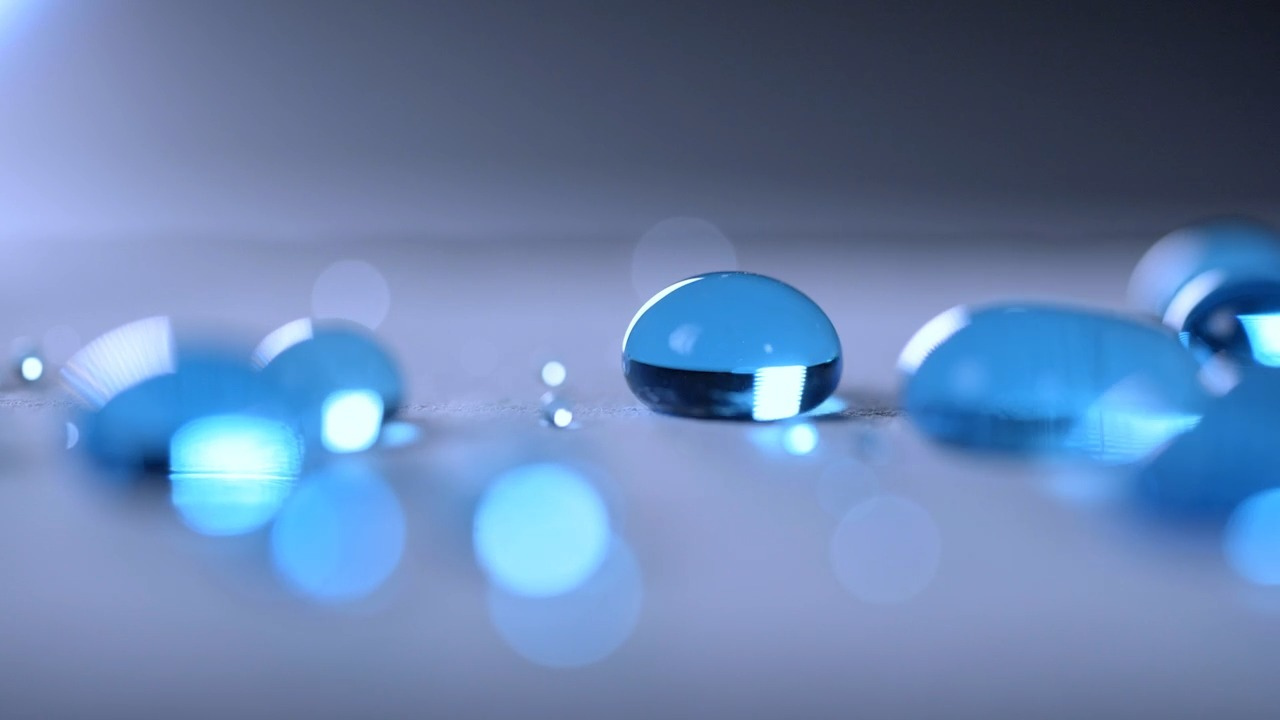
Both products have been verified by the Energy Saving Trust and certified by an independent, UKAS accredited laboratory to perform for a minimum of 25 years in harsh weather conditions.
The results of the tests also demonstrated that both products:
- Reduced water absorption of 96.3% (Masonry Creme) and 93.4% (Masonry Paint)
- On average to keep walls 6°C warmer compared to not treated walls
- Maintained excellent breathability with SD values of 0.01 (Masonry Creme) and 0.03 (Masonry Paint)
WATERPROOF MASONRY PAINT
Our coloured waterproof masonry paint is an advanced formulation for use on any exterior wall. Available in a range of popular colours such as witney cream, white & light grey, Emperor Masonry Paint will ensure your home looks pristine for 25 years or more, preventing discolouration, green growth & paint blistering.
- Waterproof
- Easy to apply
- Highly breathable
- Self-cleaning
- Energy saving
- Proven 25-year performance
- Available in a range of popular exterior paint colours
- Will never peel or flake
- Reduces penetrating damp
- Resistant to UV degradation
- Minimises the effects of frost damage
- Discourages green growth & discolouration
- Verified by the Energy Saving Trust
MASONRY CREAM
Our Masonry Creme creates a waterproof coating on exterior brick, concrete, stone and more that does not alter the appearance of your home. It offers invisible protection so that you can enjoy the natural beauty of your brickwork for years to come. It is particualrly ideal if your masonry is suffering from the effects of water ingress, such as penetrating damp or heat loss.
- Waterproof
- Easy to apply - can be applied in just one-coat
- Highly breathable
- Self-cleaning
- Energy saving
- Creates a thermal insulation barrier on exterior walls
- Proven 25-year performance
- Does not alter the appearance of brick
- Reduces penetrating damp
- Resistant to UV degradation
- Minimises the effects of frost damage
- Discourages green growth & discolouration
- Verified by the Energy Saving Trust
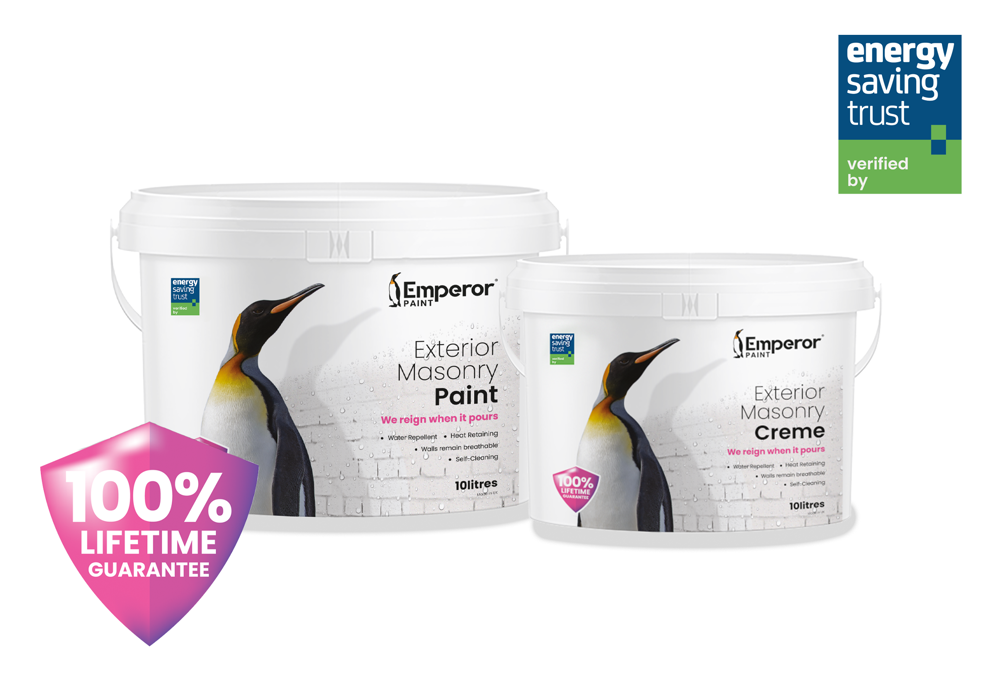
Frequently Asked Questions
Q. WHAT HAPPENS IF YOU APPLY A BREATHABLE MASONRY PAINT TO A NON-BREATHABLE MASONRY PAINT?
A common question regarding applying a breathable masonry paint is what happens if you apply it to an existing non-breathable masonry paint? If you apply a Emperor Masonry Paint to a standard masonry paint with low breathability, it will still allow moisture to escape from the property. This is because the nano-technology within Emperor Masonry Paint chemically bonds to the existing coating, resulting in it improving the breathability of that coating. This means that you do not need to remove an existing paint from a property in order to receive the benefits of a breathable masonry paint.
Q. SHOULD YOU USE BREATHABLE MASONRY PAINT ON OLDER PROPERTIES?
Breathability is crucial for properties of any age, whether a listed building or a new-build house. The reason why breathability is mentioned as particularly important for use on older properties is that these structures generally have more moisture present within the masonry. Furthermore, the ageing nature of the building materials means that if a non-breathable masonry paint is used, the damage that can be caused from the build-up of moisture could be more signficant. In any case, if you want long-term durability and to prevent damage to exterior walls, you must you a breathable masonry paint.
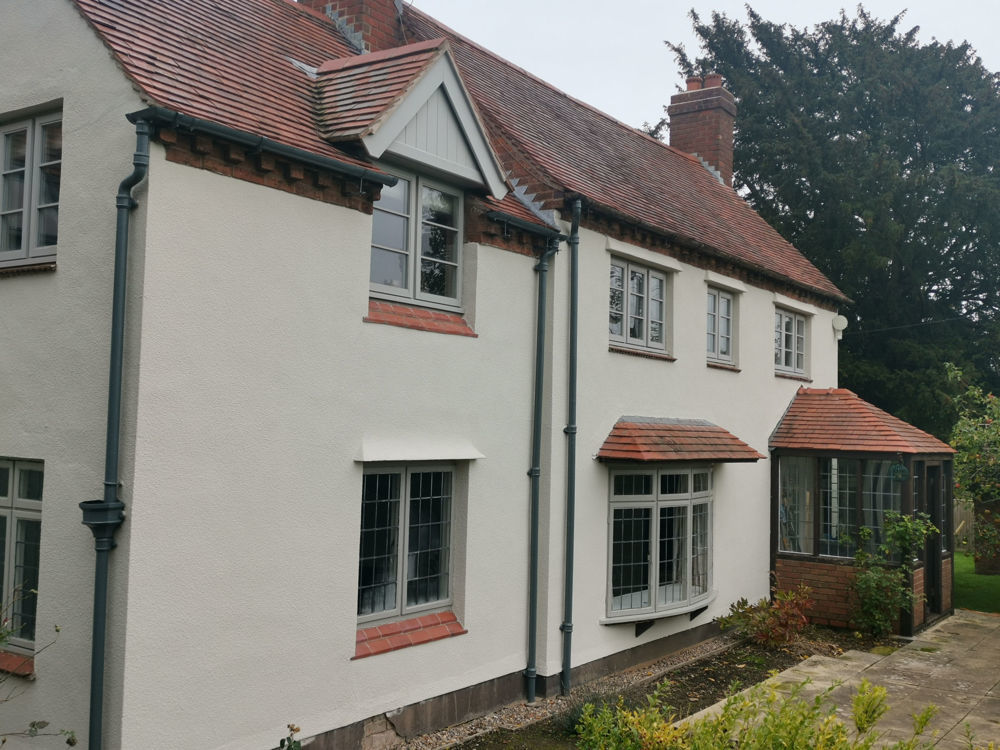
Q. WHAT SURFACES CAN BREATHABLE MASONRY PAINT BE APPLIED TO?
As a silicone masonry paint, Emperor Masonry Paint can be applied to any exterior walled surface, including brick, concrete, stone & render. This is in contrast to acrylic masonry paint that cannot be applied to silicone renders such as K-Rend. If you are planning to paint a bare masonry surface, you must simply apply Emperor Exterior Primer first to create an adhesive surface for the paint to be applied on top of. If you are painting a previously painted surface, you can apply Emperor Masonry Paint straight to this surface once it has been cleaned and if the paint is sound.
We hope that this has answered any questions you may have had regarding breathable masonry paint. Are you looking for some advice on how what paint is best for you? Our team of experts are on hand to help you at every step of the process. Contact the team today by calling 0161 509 9009 or emailing info@emperorpaint.co.uk.

